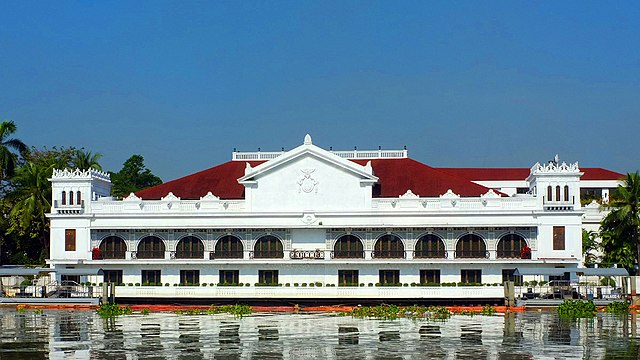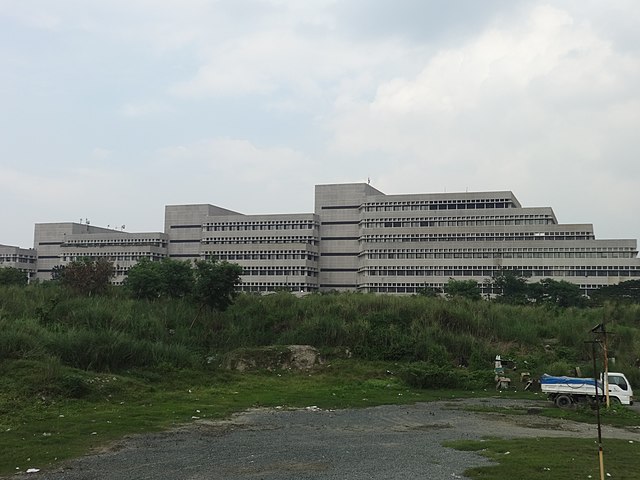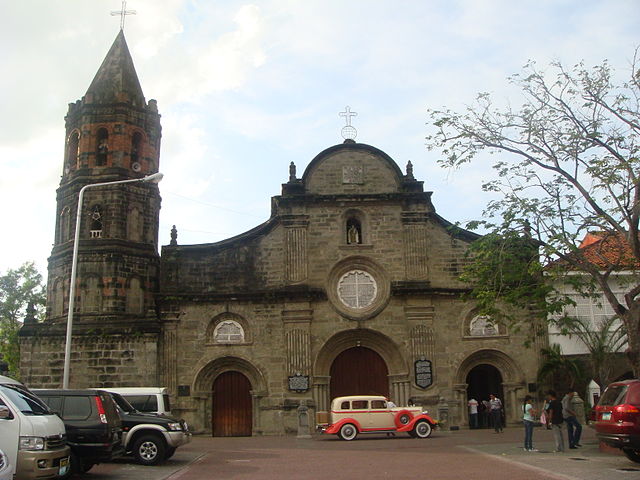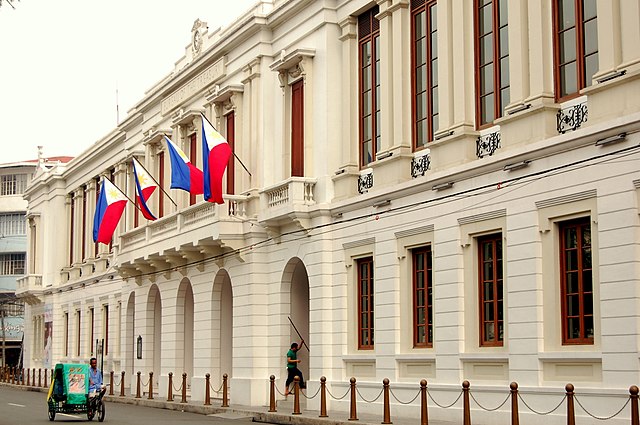Politics of the Philippines
Politics in the Philippines are governed by a three-branch system of government. The country is a democracy, with a president who is directly elected by the people and serves as both the head of state and the head of government. The president serves as the leader of the executive branch and is a powerful political figure. A president may only hold office for one six-year term. The bicameral Congress consists of two separate bodies: the Senate, with members elected at-large across the country, and the larger House of Representatives, with members chosen mostly from specific geographic districts. The Congress performs legislative functions. The judiciary is overseen by the Supreme Court of the Philippines and has extensive review jurisdiction over judgments issued by other governmental and administrative institutions.
The Malacañang Palace is the official residence of the president.
2011 State of the Nation Address by Benigno Aquino III.
Supreme Court of the Philippines
The 1935 Constitution of the Philippines, which served as the basis for the current constitution.
Congress of the Philippines
The Congress of the Philippines is the legislature of the national government of the Philippines. It is bicameral, composed of a lower body, the House of Representatives, although colloquially the term "Congress" commonly refers to just the latter, and an upper body, the Senate. The House of Representatives meets in the Batasang Pambansa in Quezon City while the Senate meets in the GSIS Building in Pasay.
Image: GSIS Building (Pasay; 12 13 2020)
Image: Batasan front qc
Barasoain Church
Ayuntamiento de Manila








